5 Best Lower Back Exercises With Dumbbells (with Workout Program!)
Dumbbells are quite versatile in terms of the sort of muscles they can target - a few of the more forgotten ones being those of the lower back.
Although actual lower back exercises are somewhat uncommon, a few good dumbbell-based examples are the dumbbell good morning, dumbbell back extension and the dumbbell deadlift.
Each exercise works the muscles of the lower back to an effective intensity, and can be invaluable in the right workout.
What to Look for in a Lower Back Dumbbell Exercise
Because there are quite a few dumbbell exercises that target the back, you’ll want to be a bit more specific when looking to fill out your workout plan.
Picking the Right Muscles Worked
Generally, exercises that target the erector spinae, obliques, the lower section of the latissimus dorsi or those of the multifidus muscles will be the right choice.
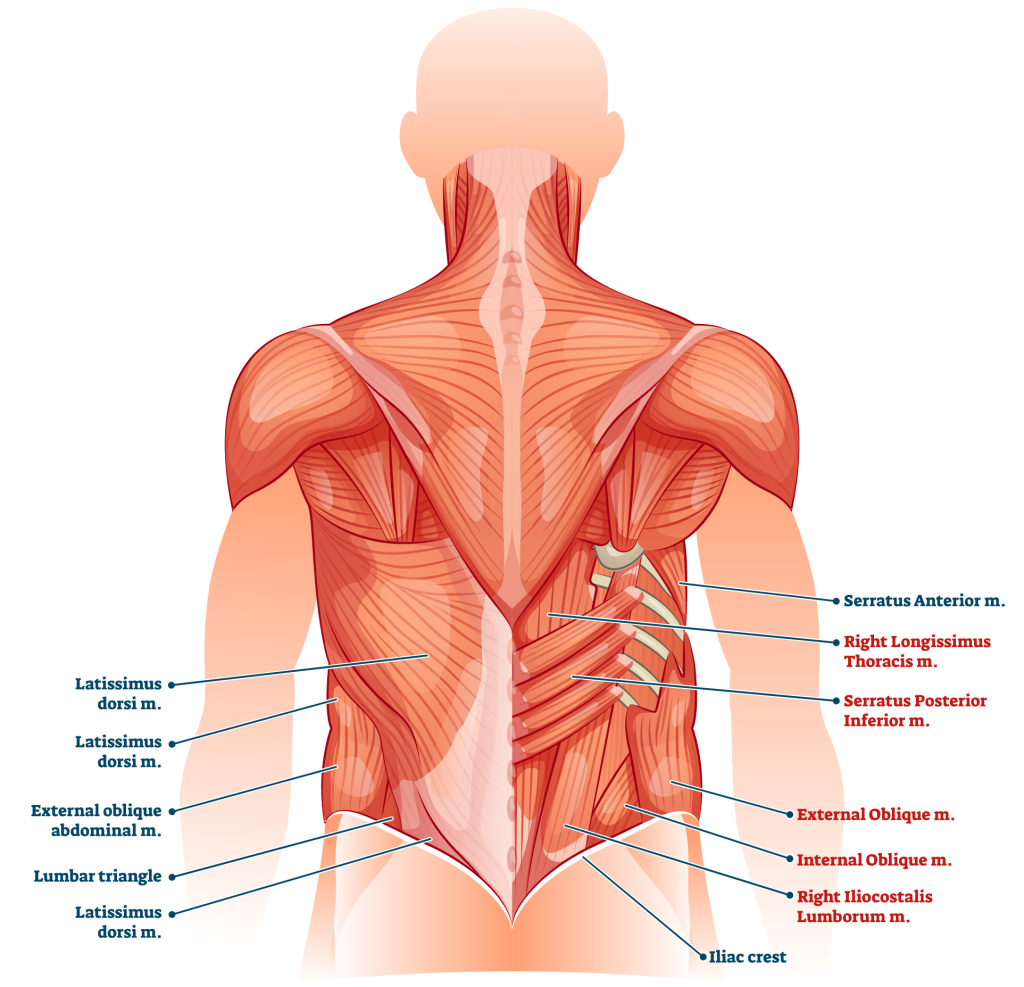
Deciding on Complexity and Difficulty
Of course, your chosen selection of exercise should also match your current level of training experience and mobility. Avoid more advanced exercises like the good morning or deadlift if you are unfamiliar with proper core bracing and spinal alignment.
Deciding Based on Programming
Finally, after considering muscles worked and whether the exercise is appropriate for your current skill level, also consider its position within the greater workout itself.
If you’re following a specific training program, consider whether other exercises also target the lower back in a secondary capacity. Successive training volume can lead to poor form and injury if left unnoticed.
In addition, avoid performing overly redundant compound exercises within the same workout.
This means avoiding performing the dumbbell deadlift after already having performed the barbell deadlift and stiff-legged deadlift, as doing so may also be too much training volume.
Instead, back extensions or low-impact core work may be better.
Lower Back Exercises / Workouts with Dumbbells
1. Dumbbell Good Mornings
The first lower back exercise to investigate is the dumbbell good morning - as quintessential a posterior chain movement as they come.
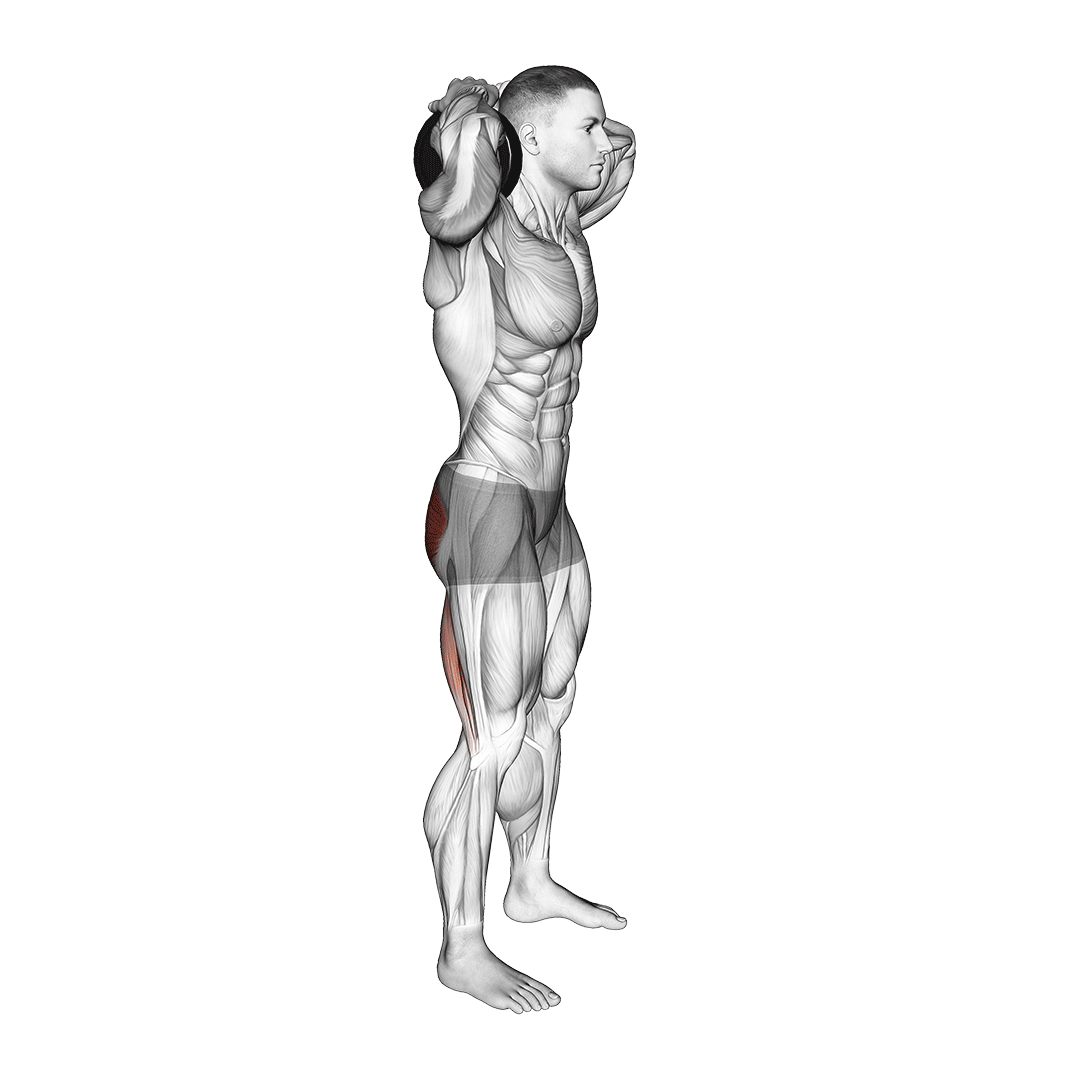
The good morning exercise is a compound movement performed so as to strengthen the muscles of the lower posterior chain and back.
Despite being an accessory exercise, it is generally a good idea to perform the good morning early in your workout due to its inherently greater risk of injury when done in a fatigued state.
Muscles Worked
Dumbbell good mornings will primarily work the glutes, erector spinae and the various smaller muscles of the lower back. In addition, they will also target the core, hamstrings, and the scapular stabilizer muscles.
Benefits
Dumbbell good mornings are a highly effective way of reinforcing the lower back, especially in regards to hip hinge mechanics.
In addition, good mornings in general are one of the few exercises that specifically target the erector spinae in a safe manner.
How-to:
Standing upright with the feet set hip-width apart and a dumbbell held in both hands, the lifter will contract their core and ensure that their spine is in a neutral alignment before beginning the repetition.
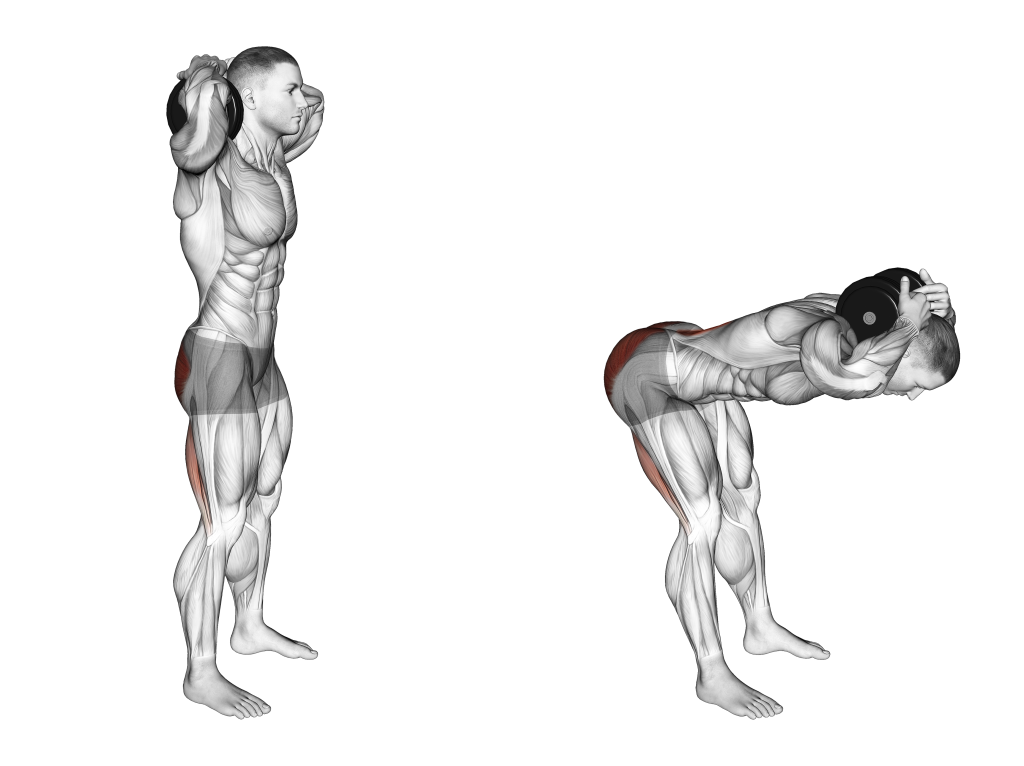
To do so, the lifter will push their pelvis back and hinge forward as they do so. This will draw the upper torso downwards, where the lifter will continue this movement with a flat back until their torso is parallel with the ground.
From this point, they will contract their glutes and hamstrings as they push their pelvis forwards, rising out of the hinge and returning to an upright position.
Once back in a standing position, the repetition is considered to be complete.
2. Dumbbell Back Extensions
A more spine-friendly alternative to the dumbbell good morning is the dumbbell back extension.
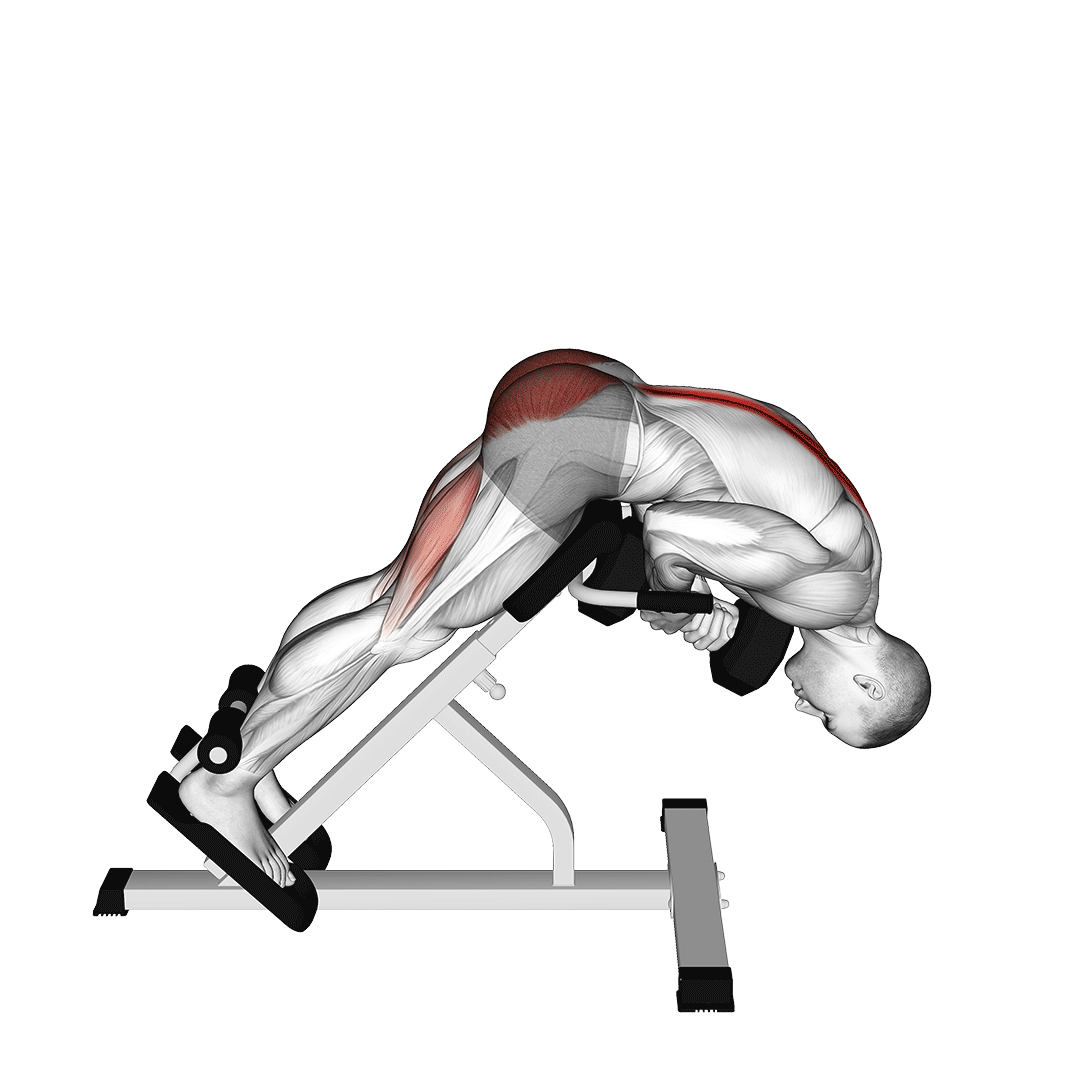
The dumbbell back extension, also referred to as the back hyperextension, is a compound movement that targets the erector spinae, lower back and lower posterior chain muscles in a low-impact manner.
Unlike good mornings, the lower body is supported by a requisite back extension bench, and as such is less likely to result in injury and places a greater focus on the back.
Muscles Worked
Dumbbell back extensions target the erector spinae, hamstrings, both internal and external obliques, glutes, and the various other small muscles of the lower back.
Benefits
Dumbbell back extensions benefit from being one of the safest lower back exercises out there - making them great as a first entry into lower back training.
In addition, while back hyperextensions are traditionally a bodyweight exercise, the addition of a dumbbell can take things a step further by upping the intensity of each repetition. This allows individuals to progress the strength and mass of their posterior chain more than would be possible with body weight resistance alone.
How-to:
To perform a dumbbell back extension, the lifter will situate themselves atop the back extension bench, a single dumbbell gripped in both hands. The bench should be adjusted so that the pelvis is supported by the pads, but that the waist is free to bend downwards.
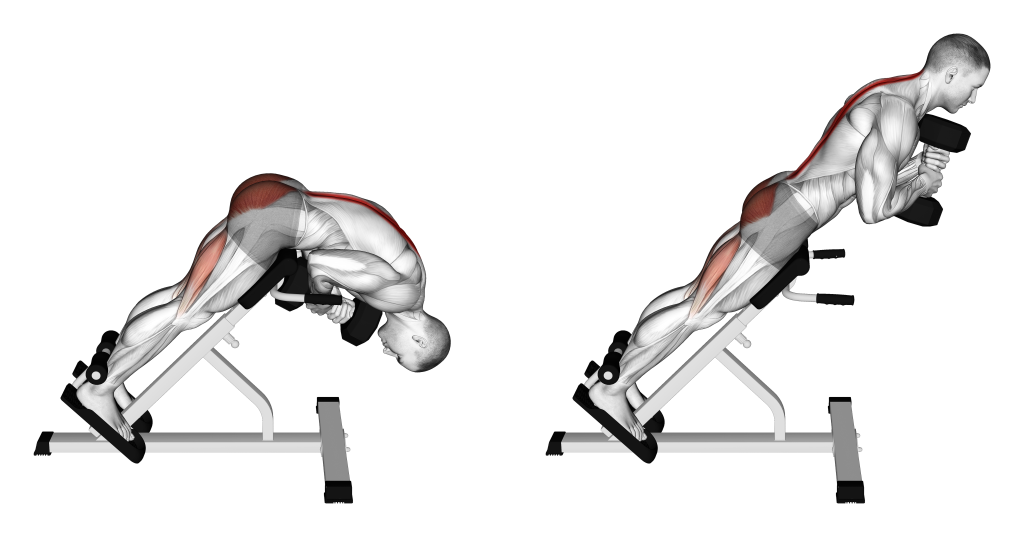
Now in the correct stance, the lifter will then contract their core and bend at the waist - lowering their torso until their it is parallel with the floor. The spine should remain neutral and the lower back flat throughout this entire exercise.
From this depth, they will squeeze their glutes and draw their torso back upwards. As they return to a rigid position with the body forming a straight line upwards, the repetition is considered to be complete.
3. Dumbbell Deadlifts
A wide-reaching compound movement of significant intensity, the dumbbell deadlift is - among other things - a highly effective lower back exercise known for building muscular strength and power throughout the entire body.
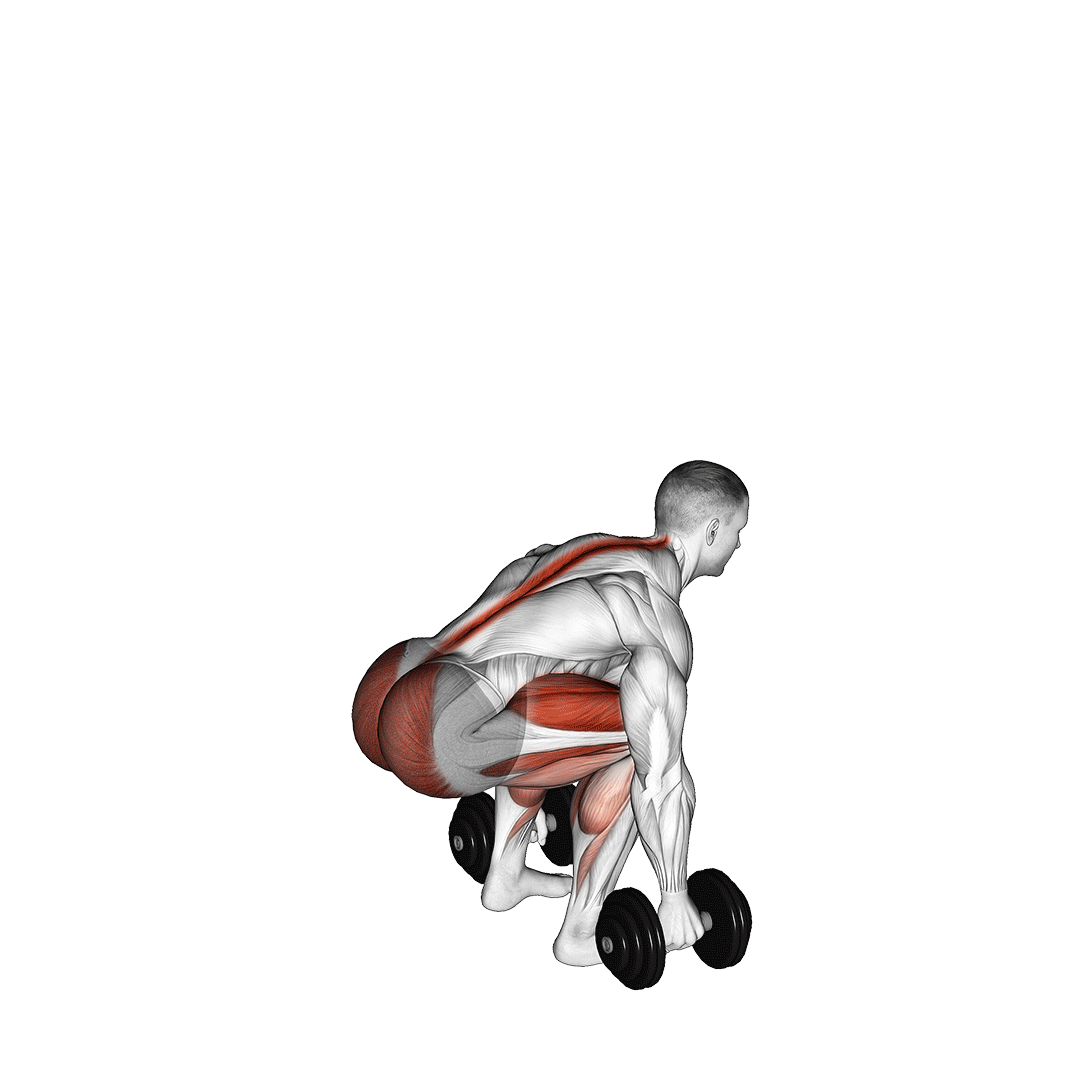
The dumbbell deadlift is simply the dumbbell variation of the standard deadlift, and features a similar movement pattern and purpose within workouts.
As a lower back exercise, lifters should keep in mind that other muscle groups like the glutes and trapezius will also be involved, and program the dumbbell deadlift accordingly.
Muscles Worked
The dumbbell deadlift will target the quadriceps, glutes, hamstrings, erector spinae, the lower back, and the core. In addition, the trapezius and forearms also help stabilize the movement.
Benefits
Dumbbell deadlifts share much the same benefits as other deadlift variations - excellent full-body strength and power development alongside reinforcement of many back-and-leg biomechanics.
Unlike other deadlifts however, the dumbbell deadlift can be performed with two dumbbells held at either side of the body. This more readily distributes weight throughout the body, and reduces the risk of sustaining a lower back or spine injury.
How-to:
To prepare to perform a repetition of the dumbbell deadlift, the lifter will assume the standard deadlift stance by bending and knees and pushing the hips back, feet set hip-width apart and lower back in a neutral position.
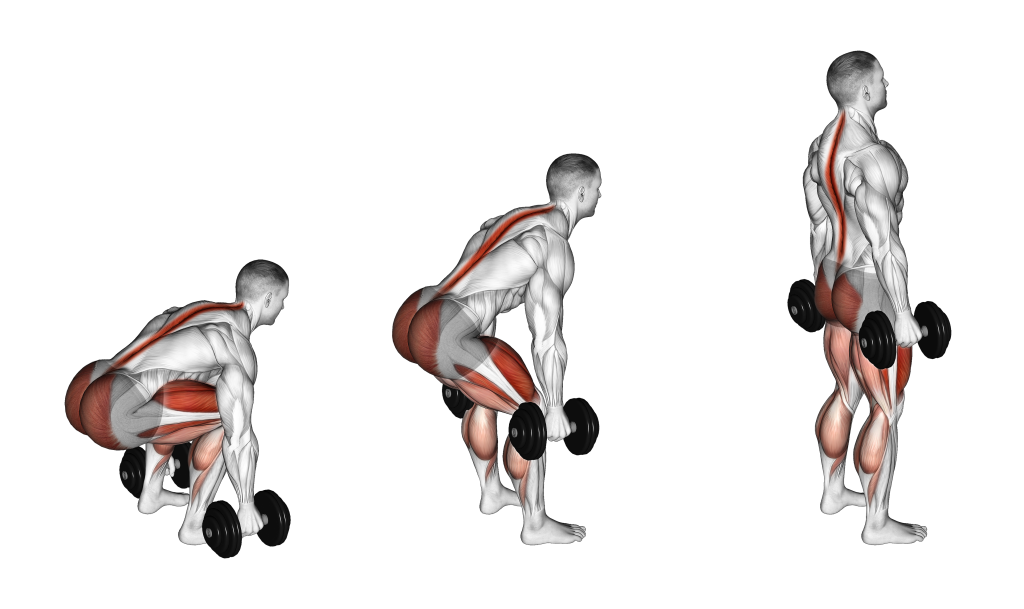
A pair of dumbbells should be held in both hands, and the lifter should strive to keep their core braced and spine protected throughout the exercise. This means pushing the chest up and out, and ensuring the head is facing forwards.
Once in the appropriate stance, the lifter will drive through their heels and extend their knees and hips. This will draw them into a standing position, with the lower back kept in a neutral position the entire movement.
When the lifter has returned to a standing position, the repetition is considered complete.
4. Dumbbell Jefferson Curls
A unique exercise most often performed by gymnasts - the Jefferson curl is an advanced multi-joint posterior chain exercise that intentionally bends the spine into a state of flexion so as to reinforce mechanics related to it.
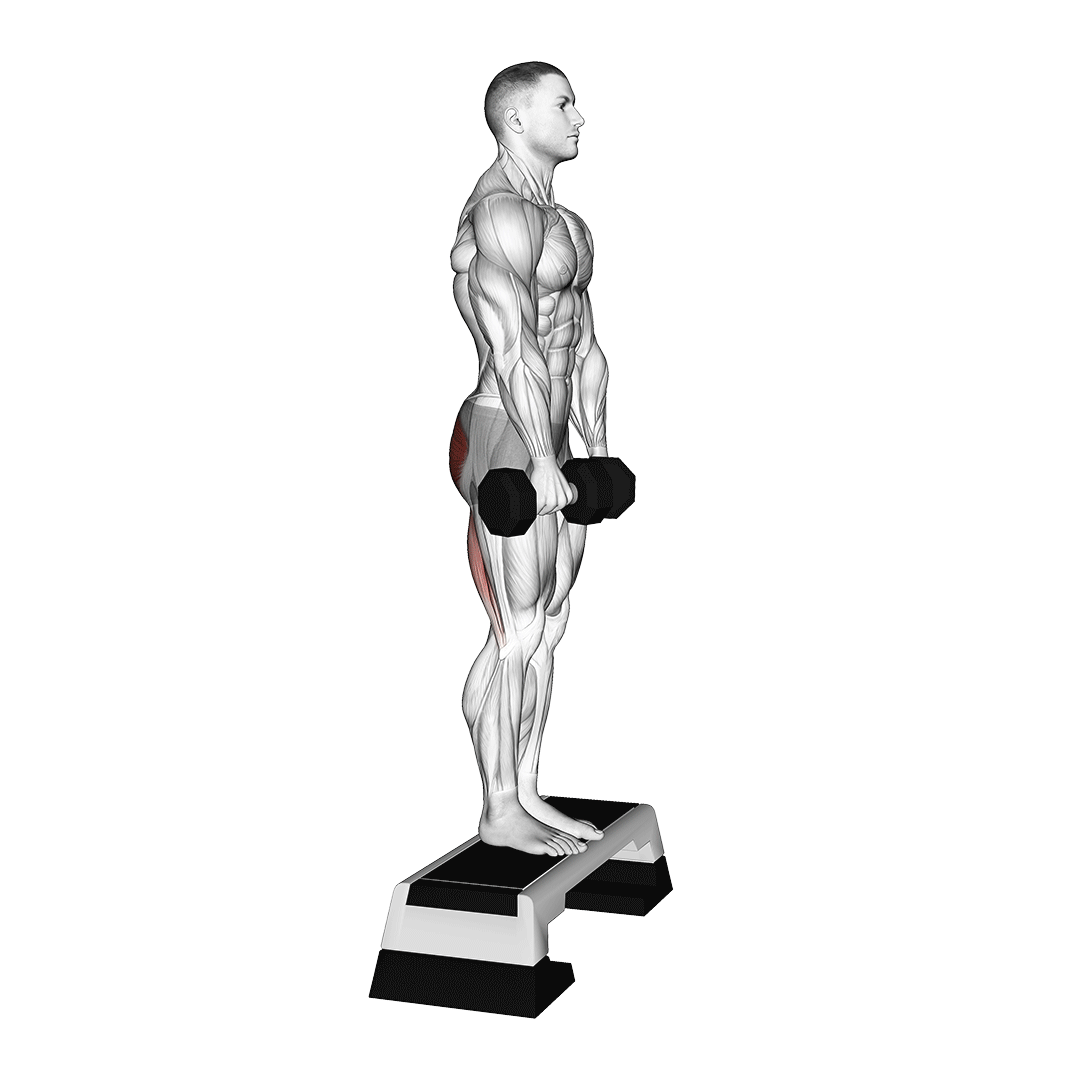
Apart from the requisite dumbbell, Jefferson curls will require a stable object to elevate the lifter off the floor from.
In addition, it is important to note that this exercise can be dangerous if performed by inexperienced, unprepared or previously injured individuals. Professional guidance may be necessary.
Muscles Worked
Jefferson curls target the glutes, erector spinae, hamstrings and the smaller muscles of the lower back.
Benefits
The Jefferson curl is used in gymnastics, professional weightlifting and other sports that may require not only a strong back, but also improvements in mobility of the posterior chain.
Although the Jefferson curl has arguments both for or against its usage, there is no denying that it indeed reinforces spinal function and mobility while in a state of flexion.
Consult a professional prior to including it into your training program, however, as there is also evidence that suggests it could be detrimental to general spine tissue health.
How-to:
Standing atop an elevated surface, the lifter will grip a dumbbell in both hands as they face their head forwards. The spine must remain stacked atop itself at the start of the repetition in order to reduce the risk of injury.
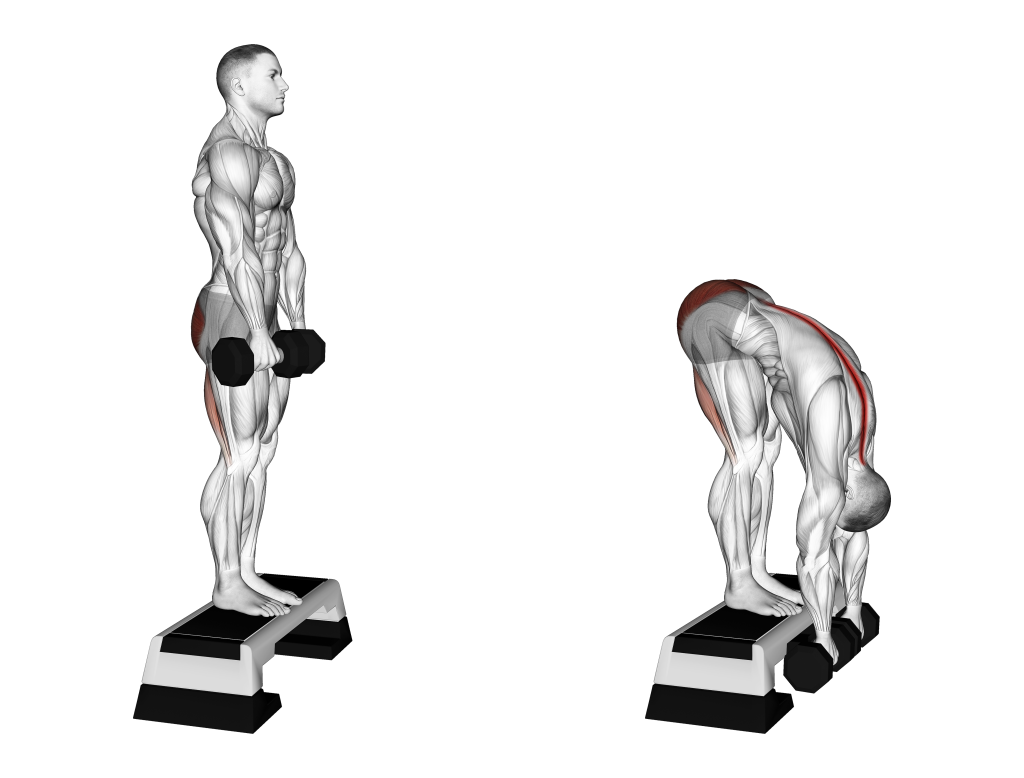
As slowly as possible, the lifter will perform the repetition by curling their spine forwards, beginning with the head and the c-spine. The legs must remain straight, with the sole moving joints being those of the back.
Unlike other lower back exercises, the Jefferson curl does not keep the lower back neutral, and instead bends it as the torso curls sufficiently downwards. At the end of the movement, the hips will hinge forwards as well.
The repetition is considered complete once the entire back has been flexed forwards, and the lifter has returned to their starting upright position.
If you are unfamiliar with the Jefferson curl, it is best to first perform it without the use of a dumbbell.
5. Dumbbell Swings (Kettlebell Swings With a Dumbbell)
For a more dynamic and explosive dumbbell exercise that also targets the lower back, lifters can try performing dumbbell swings.
Dumbbell swings are a highly dynamic compound exercise more often performed with the use of a kettlebell, but are otherwise identical if a dumbbell is used instead.
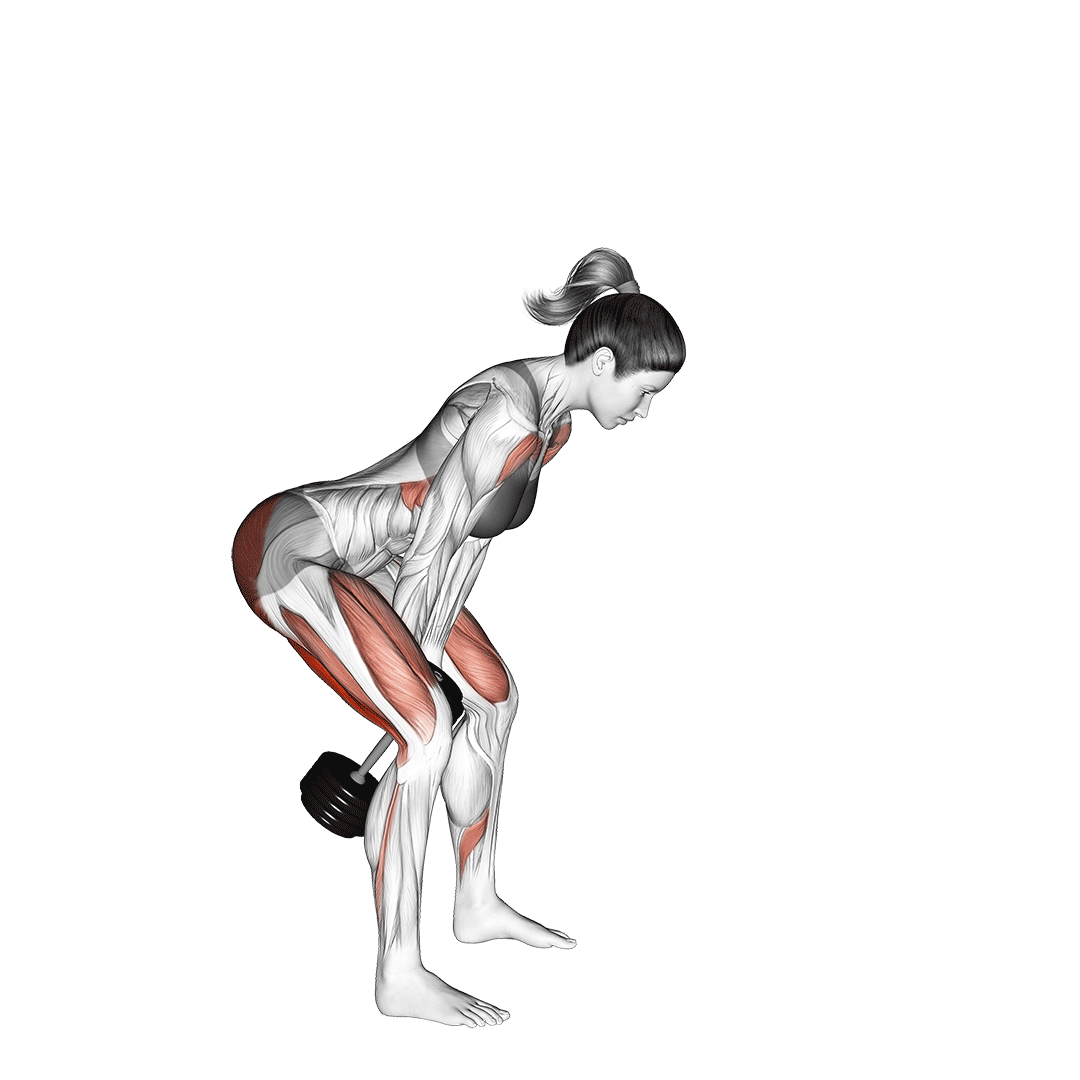
Like the dumbbell deadlift, the lower back is more of a secondary muscular recruitment during a dumbbell swing, as numerous other muscle groups also play a role in the movement.
This does not mean that the lower back is left untrained, however, and dumbbell swings can be quite effective at reinforcing the lower back without risking a spinal injury.
Muscles Worked
Dumbbell swings target the deltoids, glutes, erector spinae, hamstrings, quadriceps, serratus and trapezius.
Benefits
Dumbbell swings are one of the more effective exercises for building athletic prowess, as they develop explosiveness and strength throughout the entire body.
Although they aren’t specifically performed for targeting the lower back, the dumbbell swing is nonetheless quite effective at reinforcing the lower back - especially while in a state of exertion.
How-to:
To perform a repetition of the dumbbell swing, the lifter will stand upright with their feet set wide enough apart to swing a dumbbell between. Likewise, the hands should be gripping one end of the dumbbell in a secure manner.
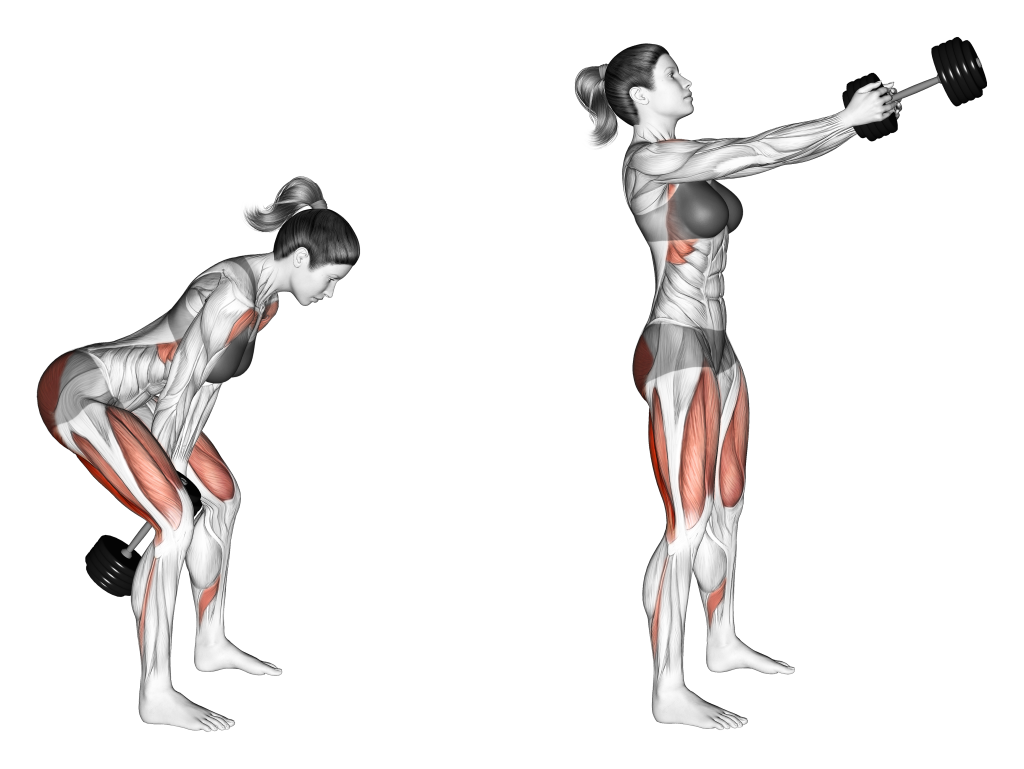
Beginning the repetition, the lifter will hinge forwards at the hips, keeping their lower back flat as they lower the dumbbell between their legs.
Once the torso is parallel with the floor, the lifter will rapidly extend their hips forwards and swing the dumbbell upwards. The arms should remain straight as they do so, with most of the force being derived from hinging at the pelvis.
When the opposite end of the dumbbell has been swung up to a parallel level with the chest or shoulders, the repetition is considered to be complete.
Sample Lower Back Dumbbell Workout
The following is a sample workout meant to target the muscles of the lower back. It may be performed in isolation, or integrated into an already pre-existing workout.
Dumbbell Deadlifts - 3x5
Dumbbell Swings - 3x8
Dumbbell Good Mornings OR Dumbbell Back Extensions - 2x12
1-2 Optional Oblique and Abdominal Accessory Exercises
Frequently Asked Questions (FAQ)
Are Lower Back Exercises Necessary?
The muscles of the lower back are just like any other muscle found in the body - weak and prone to injury if not trained correctly.
Training the lower back is indeed a necessity, especially for weightlifters who regularly engage in activities that may place their spine or lower back at risk.
Do Dumbbell Squats Work the Lower Back?
Dumbbell squats do indeed work the lower back in a static manner, but are nowhere near as effective at training them as exercises like the back extension or deadlift.
Should You Still Workout With Lower Back Pain?
It isn’t advisable to exercise if you are experiencing lower back pain. Be it chronic or not, pain in the lower back is generally a symptom of a greater physiological issue.
Consult a doctor prior to working out with any sort of pain in your body.
Conclusion
While we’ve listed the five most effective lower back dumbbell exercises in this article, keep in mind that there are several more specific alternatives that you may benefit from. Depending on your reasons for training the lower back, certain exercises can help emphasize the specific sort of development you wish to achieve.
Regardless of whether you’ve picked up a few new exercises or wish to keep searching, remember to perform each exercise with the utmost caution in regards to the integrity of the spine.
Lower back exercises are among the most dangerous when performed incorrectly, and it is vital to use as little weight as needed for an effective workout.
References
1. Vigotsky AD, Harper EN, Ryan DR, Contreras B. Effects of load on good morning kinematics and EMG activity. PeerJ. 2015 Jan 6;3:e708. doi: 10.7717/peerj.708. PMID: 25653899; PMCID: PMC4304869.
2. Heneghan NR, Lokhaug SM, Tyros I, Longvastøl S, Rushton A. Clinical reasoning framework for thoracic spine exercise prescription in sport: a systematic review and narrative synthesis. BMJ Open Sport Exerc Med. 2020 Mar 29;6(1):e000713. doi: 10.1136/bmjsem-2019-000713. PMID: 32341799; PMCID: PMC7173996.
